I had briefly thought of doing that, but I noticed a micro-crack in the acrylic next to one of the hinges and I was afraid that over-tightening might make the crack worse. I was hoping that capillary action would pull the Cap'n Tolleys into any cracks, and it looked like it did from the little sliver of white liquid I saw. My next step would be to slightly tighten the screws further.
This section allows you to view all posts made by this member. Note that you can only see posts made in areas you currently have access to.
#527
Main Message Board / Re: Deck leak to raw water intake area
August 21, 2016, 08:26:41 PM
Thanks for the tips. It will help with my identical leak problem.
Unrelated question: Is there a special tool for removing the emergency tiller access port? (Maybe it's on the tiller, but I'm not at the boat.)
Thanks!
Unrelated question: Is there a special tool for removing the emergency tiller access port? (Maybe it's on the tiller, but I'm not at the boat.)
Thanks!
#528
Main Message Board / Rainwater Leak Starboard Aft Quarter
August 21, 2016, 04:15:01 PM
I have a very small rainwater leak that allows a cup of water or so after each rainstorm. It accumulates in the low spot under the aft berth near the raw water intake. Based on the contour of the hull, it could be coming from anywhere on the starboard side as far forward as the galley. This picture shows the location where it accumulates, although I removed the water before taking the picture:
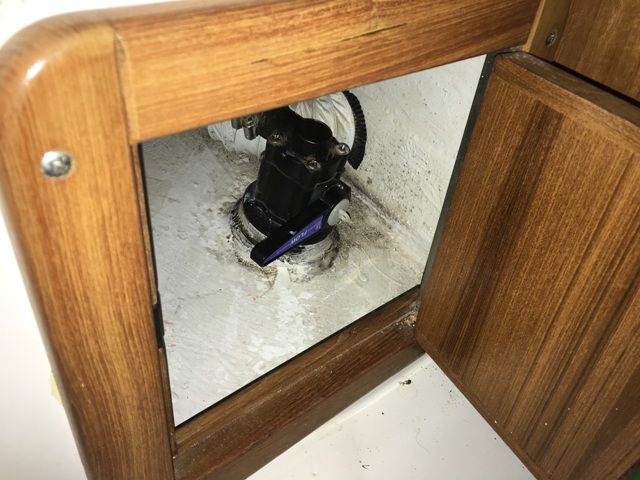
I was on the boat just after a rainstorm last week and saw the water present, but was not able to trace the trickle of water to its source. I'll be unable to work on it again until I'm on the boat while it is raining, and that happens relatively infrequently. (I suppose I could douse it with water from a hose, though.)
FYI, the area stays bone dry unless it rains, so that seems to eliminate the domestic water system as a source of the leak.
Do any of you have experience with this, and can you suggest possible deck penetrations that are more likely than others to be the source?

I was on the boat just after a rainstorm last week and saw the water present, but was not able to trace the trickle of water to its source. I'll be unable to work on it again until I'm on the boat while it is raining, and that happens relatively infrequently. (I suppose I could douse it with water from a hose, though.)
FYI, the area stays bone dry unless it rains, so that seems to eliminate the domestic water system as a source of the leak.
Do any of you have experience with this, and can you suggest possible deck penetrations that are more likely than others to be the source?
#529
Main Message Board / Re: Leaking Lewmar Hatch
August 21, 2016, 04:05:11 PM
FYI, we may be having a similar problem with V-berth and main salon hinges:
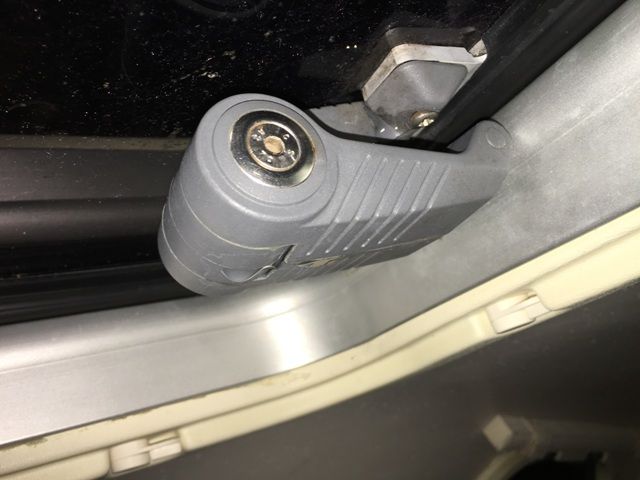
In our case, it may be coming from the screw. But I believe in sealing from the outside in, so I want to seal the rectangular plastic part on the outside. With storms coming there was not sufficient time to remove and rebed the hinges. That will have to wait until off-season when the boat is under full cover. In the meantime I have tried Cap'n Tolley's around all the plastic parts. Unfortunately I had to leave the boat before the next rainstorm hit, so I can't speak for its success. But it's raining hard there now, and security video shows no sign of water dripping from the hinge or accumulating on the floor under the hatch:
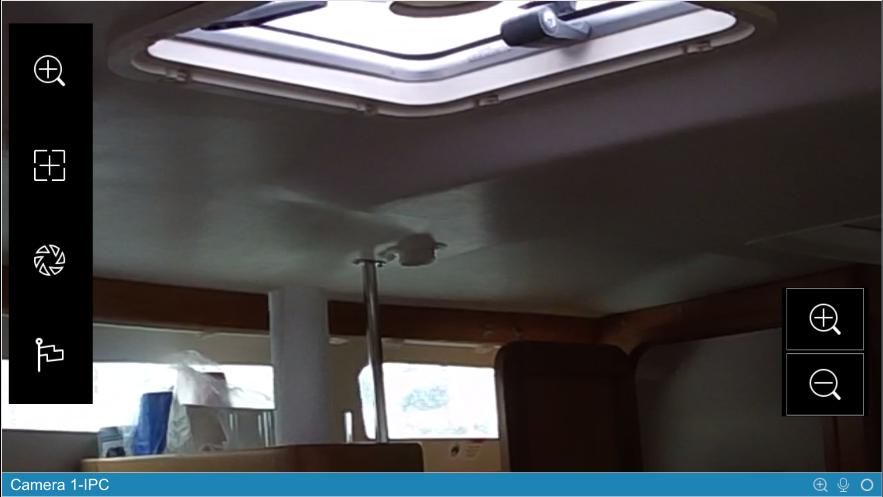
I'll reply back with final results when I have them. But in the meantime I'm posting current status so others can benefit.

In our case, it may be coming from the screw. But I believe in sealing from the outside in, so I want to seal the rectangular plastic part on the outside. With storms coming there was not sufficient time to remove and rebed the hinges. That will have to wait until off-season when the boat is under full cover. In the meantime I have tried Cap'n Tolley's around all the plastic parts. Unfortunately I had to leave the boat before the next rainstorm hit, so I can't speak for its success. But it's raining hard there now, and security video shows no sign of water dripping from the hinge or accumulating on the floor under the hatch:

I'll reply back with final results when I have them. But in the meantime I'm posting current status so others can benefit.
#530
Main Message Board / Re: Annapolis Sailboat Show
August 21, 2016, 03:33:23 PM
One of the benefits our location is that we can make a last-minute call based on how the weather looks, and do a car trip from home if preferred. Our prior boat (C250) was near Philly, 2-3 days away by water. Our new boat is in Rock Hall, and my wife has the following week off, so weather permitting we hope to cruise that week and might start out with a couple nights in Annapolis. If weather looks bad we'll just drive.
#531
Main Message Board / Re: Annapolis Sailboat Show
August 21, 2016, 01:00:37 PM
We go every year by car, but only a day trip.
In the past we have mostly looked and avoided the temptation to spend. Having just upsized, this year we may need to make some purchases.
Does anyone ever try to go by boat? I assume that it is very crowded, and would need to anchor pretty far up one of the creeks. Are there any special considerations? How far away do the water taxis provide service?
In the past we have mostly looked and avoided the temptation to spend. Having just upsized, this year we may need to make some purchases.
Does anyone ever try to go by boat? I assume that it is very crowded, and would need to anchor pretty far up one of the creeks. Are there any special considerations? How far away do the water taxis provide service?
#532
Main Message Board / Re: Propane tank for MK II
August 05, 2016, 07:07:01 PM
Does anyone know when Catalina's factory installed tanks started coming with OPD?
Is there a problem getting the OPD tanks to fit in the LP locker? (They're about an inch taller than pre-OPD tanks.)
When you get your OPD tank from the RV dealer, please compare dimensions and let us know how it fits.
Is there a problem getting the OPD tanks to fit in the LP locker? (They're about an inch taller than pre-OPD tanks.)
When you get your OPD tank from the RV dealer, please compare dimensions and let us know how it fits.
#533
Main Message Board / Re: Fall 2016 Mainsheet Article: ST4000 Mk I Autopilots
July 22, 2016, 09:23:07 PM
The cocktail settings that I found include a setting for rudder damping. But that has no effect unless you have a rudder sensor installed. Hence my question about how common this feature is on these boats.
#534
Main Message Board / Fall 2016 Mainsheet Article: ST4000 Mk I Autopilots
July 22, 2016, 08:57:39 PM
I just looked at the Fall 2016 Mainsheet issue, and enjoyed John Nixon's excellent article on the Raymarine ST4000 series autopilots. It came about a month too late for me, as I had already experienced an autopilot failure on my new (to me) Catalina 34 about 2 hours into my maiden voyage. It turned out to be a shredded/dryrotted drive belt, which was easily fixed as described here:
http://www.sailnet.com/forums/general-discussion-sailing-related/256778-need-help-diagnosing-raymarine-st4000-autopilot-post3575569.html#post3575569
I found a service manual online that helped to guide me through the repair, but John's article would have gotten me there faster, especially since it pointed me to the source for the aftermarket replacement belts (whom I found myself, but not until after much searching).
Although I am brand new to the black-ring Mk I version of the ST4000, my prior boat (C250WK) had the gray-ring Mk II version, so I've learned a number of things that apply to both. I'll share a few here:
I have not yet tried the "Catalina cocktail" settings, but some of them look surprising to me. Do most of these C34 installs include a rudder position sensor? (I'm embarrassed to say that I don't know of my new boat has one - will check next time I go down there.) Some of the cocktail settings only have an effect if there is a rudder sensor.
http://www.sailnet.com/forums/general-discussion-sailing-related/256778-need-help-diagnosing-raymarine-st4000-autopilot-post3575569.html#post3575569
I found a service manual online that helped to guide me through the repair, but John's article would have gotten me there faster, especially since it pointed me to the source for the aftermarket replacement belts (whom I found myself, but not until after much searching).
Although I am brand new to the black-ring Mk I version of the ST4000, my prior boat (C250WK) had the gray-ring Mk II version, so I've learned a number of things that apply to both. I'll share a few here:
- Drive tension adjustment is critically important IMO. Too loose and the wheel will slip in heavy conditions, too tight and the clutch may fail to disengage. I believe that, for some people, this adjustment may be at the heart of the ratcheting noises that John describes (although the drive ring distortion that he describes is also an interesting observation the I'll have to look out for). The service manual describes a very detailed procedure for adjusting tension which involves measuring motor amperage under load, etc. I did not have the right electrical connectors for that, so instead I followed a different procedure described in the Sailnet link above.
- A Google search revealed several complaints of clutches disengaging when the AP turns to port. I believe that root cause is the cam rollers (for clutch and also for tension adjustment) binding up and not rolling properly. Cleaning those rollers is very important, especially since they are at the bottom of the drive ring where organic matter can build up.
- In his article (and several posts on this site and elsewhere), John and others describe the very common problem of autopilots oscillating port to starboard, and the oscillations getting gradually larger. Some knowledge of PID control theory can help diagnose this. Although I am not sure that the ST4000 is a full PID controller, the rudder gain adjustment is basically the "P" in PID, and general control theory says to use the minimum gain required to maintain a stable course. Too low and the boat will fall off in one direction; too high and the boat will experience growing oscillations in both directions like John described. I made a regular practice of adjusting the rudder gain to fit the sea state, and had set it up as one of the data pages on the control head to bring it up for quick adjustment by simply pushing the "Display" button. My personal experience (with my prior boat and with charter boats) is that high-power-draw settings that increase the AP's sensitivity and speed of adjustment can often make things worse. It's often better to reduce sensitivity so that the AP will ignore little disturbances and adjust for the big ones.
- I also see a lot of issues with using the AP in following seas, just like many others. On my prior boat, I could never get the AP to work well in following seas. Once again, PID theory says that regular, slow period perturbations can be more difficult to any controller to overcome than random, quick ones. Most controllers do not know what is a random perturbation and what is a regularly repeating one. It just sees a change and adjusts, and when the perturbations happen slowly, it will get confused into thinking that it's a permanent change (like shift in wind or current) and attempt to follow it when it should just ignore it. Sometimes you just have to hand steer, because your brain can figure out which perturbations to ignore better than any AP can. It can also do a "feed forward loop" based on what your eyes see coming, whereas an AP can only do a "feedback loop" what it has already detected.
I have not yet tried the "Catalina cocktail" settings, but some of them look surprising to me. Do most of these C34 installs include a rudder position sensor? (I'm embarrassed to say that I don't know of my new boat has one - will check next time I go down there.) Some of the cocktail settings only have an effect if there is a rudder sensor.
#535
Main Message Board / Re: Beware the low-hour diesel
July 13, 2016, 09:04:43 PMQuote from: Mick Laver on July 11, 2016, 12:44:52 PM..."If you run old fuel that has lost its caloric oomph, as so many sailors do, it wrecks the engine."...I have to wonder how, exactly, diesel fuel loses its "caloric oomph" over time. I know that bad things can happen to stale fuel, but loss of BTU content would require some interesting chemical changes.
#536
Main Message Board / Re: Chainplates
July 13, 2016, 09:00:36 PM
I realize that Catalina Direct is a dealer who is separate from Catalina Yachts (except for a close relationship and deep institutional knowledge since they hired Kent Nelson from Catalina). They sell parts sourced from Catalina factory, as well as other 3rd party suppliers.
In the case of the redesigned chainplates, the C36 website has numerous references to the new chainplate design being supplied by the Catalina factory, complete with names and phone numbers of Catalina employees to contact for information. So the appear to be a product of Catalina Yachts that is sold by CD and also direct by the factory. I did not have time to do a thorough search for differing opinions, but the few messages that my search turned up seemed to put this into the "DO THIS OR ELSE" category for boats prior to 2003. For $9 per cover, it seems like a no-brainer that will turn a regular maintenance item into a once every 20-30 year job.
I do not agree that the new cover provides two different places for ingress. The current cover has two places for ingress, and one of them (gap adjacent to the tab) appears to have very little bonding area and exposes the sealant directly to UV and rain. It also is at deck level where pooling can occur. The modified chainplate looks to me in the pictures like it would provide a significant bonding area in the narrow gap between the spigot and tab, thus shielding it from UV, and moves the exposed area up to an elevated point where pooling cannot occur.
I'm a little surprised that the opinion toward this cover modification here is so different than the messages I saw on the C36 website. Are the C34 chainplates a different (superior) design than the C36 ones?
I realize that it's my boat and my choice. My inquiry here is still pretty much the same: Has anyone here done this upgrade, and if so, do you have any suggestions for how to apply the butyl tape in a way that will keep it in the spigot and not just force it up and out when you push the cover down on the tab? Do you line the inside of the spigot with butyl tape, or the outside of the tab? Also, has anyone had any trouble getting them to fit due to manufacturing tolerances?
The C36 skipper that I am aware of was peddling a fully redesigned chainplate (not just the cover) on a YouTube video. While he still will make them up, Catalina's modified cover seems like a simpler, more elegant solution, and he seems to have backed off his marketing in favor of the improved cover. There's probably more on the C36 website about this, but I'm too close to bedtime to check tonight.
All my comments are based on looking at pictures and my own chainplates. I have no actual experience with these redesigned covers, which is why I'm asking here.
In the case of the redesigned chainplates, the C36 website has numerous references to the new chainplate design being supplied by the Catalina factory, complete with names and phone numbers of Catalina employees to contact for information. So the appear to be a product of Catalina Yachts that is sold by CD and also direct by the factory. I did not have time to do a thorough search for differing opinions, but the few messages that my search turned up seemed to put this into the "DO THIS OR ELSE" category for boats prior to 2003. For $9 per cover, it seems like a no-brainer that will turn a regular maintenance item into a once every 20-30 year job.
I do not agree that the new cover provides two different places for ingress. The current cover has two places for ingress, and one of them (gap adjacent to the tab) appears to have very little bonding area and exposes the sealant directly to UV and rain. It also is at deck level where pooling can occur. The modified chainplate looks to me in the pictures like it would provide a significant bonding area in the narrow gap between the spigot and tab, thus shielding it from UV, and moves the exposed area up to an elevated point where pooling cannot occur.
I'm a little surprised that the opinion toward this cover modification here is so different than the messages I saw on the C36 website. Are the C34 chainplates a different (superior) design than the C36 ones?
I realize that it's my boat and my choice. My inquiry here is still pretty much the same: Has anyone here done this upgrade, and if so, do you have any suggestions for how to apply the butyl tape in a way that will keep it in the spigot and not just force it up and out when you push the cover down on the tab? Do you line the inside of the spigot with butyl tape, or the outside of the tab? Also, has anyone had any trouble getting them to fit due to manufacturing tolerances?
The C36 skipper that I am aware of was peddling a fully redesigned chainplate (not just the cover) on a YouTube video. While he still will make them up, Catalina's modified cover seems like a simpler, more elegant solution, and he seems to have backed off his marketing in favor of the improved cover. There's probably more on the C36 website about this, but I'm too close to bedtime to check tonight.
All my comments are based on looking at pictures and my own chainplates. I have no actual experience with these redesigned covers, which is why I'm asking here.
#537
Main Message Board / Re: Chainplates
July 13, 2016, 10:01:33 AM
Yes, I had seen your post before. I know the Bed-It butyl tape is great stuff and retains its properties pretty well in the elements. But first time I saw a C34/C36 chainplate I was shocked at the size of the gap between the tab and the coverplate, and concerned that the design relies too heavily on a fat wad of sealant to keep moisture dry. I was pleasantly surprised that my surveyor reported dry decks around the chainplates, and I want to keep it that way.
If the old design is completely adequate, do you have any idea why Catalina modified them?
If the old design is completely adequate, do you have any idea why Catalina modified them?
#538
Main Message Board / Re: Chainplates
July 12, 2016, 09:37:05 AM
Do any of you use the improved chainplate covers that Catalina Direct sells? It seems like this could be a significant improvement in sealing above the deck by completely eliminating the huge gap between the cover plate and the chainplate tab, and greatly increasing the bonding area.
http://www.catalinadirect.com/index.cfm/product/2584_772/c-34-c-36-chainplate-cover-upgrade-pr.cfm

If you have used these, do you have any suggestions for how to apply the butyl tape in a way that it is not just pushed up and out the spigot?
I had searched for notes on this a few weeks ago and did not find anything, so this thread seems to be a good opportunity to bring this up.
As for the question about how to prevent the epoxy from filling the slot, I did a chainplate job on my C250. One side was a little wet, so I ground out the rotted end balsa core (only about 1" wide) and re-filled with epoxy. I filled the screw holes and drilled, but I did not want to have to saw out the (very narrow) chainplate slots on that boat, so I wrapped ~10 mil polyethylene film around a kitchen sponge and pushed it down into the slot with Gorilla tape sealing the bottom headliner. After slow curing overnight the whole thing came out easily (almost nothing sticks to polyethylene), leaving a gap to reinsert the chainplate. This method might be modified for the larger chainplate slots on the C34.
http://www.catalinadirect.com/index.cfm/product/2584_772/c-34-c-36-chainplate-cover-upgrade-pr.cfm

If you have used these, do you have any suggestions for how to apply the butyl tape in a way that it is not just pushed up and out the spigot?
I had searched for notes on this a few weeks ago and did not find anything, so this thread seems to be a good opportunity to bring this up.
As for the question about how to prevent the epoxy from filling the slot, I did a chainplate job on my C250. One side was a little wet, so I ground out the rotted end balsa core (only about 1" wide) and re-filled with epoxy. I filled the screw holes and drilled, but I did not want to have to saw out the (very narrow) chainplate slots on that boat, so I wrapped ~10 mil polyethylene film around a kitchen sponge and pushed it down into the slot with Gorilla tape sealing the bottom headliner. After slow curing overnight the whole thing came out easily (almost nothing sticks to polyethylene), leaving a gap to reinsert the chainplate. This method might be modified for the larger chainplate slots on the C34.
#539
Main Message Board / Re: V-berth extension cushion now stays put
July 06, 2016, 10:19:21 AMQuote from: mregan on July 06, 2016, 09:00:41 AMSounds like a good idea that could also be used to put the extension down in the lower "seat" position.
I used a strip of velcro on the bottom & the top piece of wood. Never moves.
I had assumed that the little 3/4" knobs that were originally on the cushion were OEM supplied. Now I am not so sure. What did Catalina do originally to keep the extension cushion in place?
#540
Main Message Board / V-berth extension cushion now stays put
July 04, 2016, 08:27:35 PM
We haven't used the V-berth extension cushion because it was not secure. It seemed to drift aft, and I was afraid that it might fall off the wood furring strips that are meant to hold it up. I went below and found that the little round knobs were not providing a firm barrier to movement. So I picked up some larger square knobs off of Amazon.com and mounted them in the same holes as the originals. The fit was perfect, and much more secure. Now the cushion really stays in place:
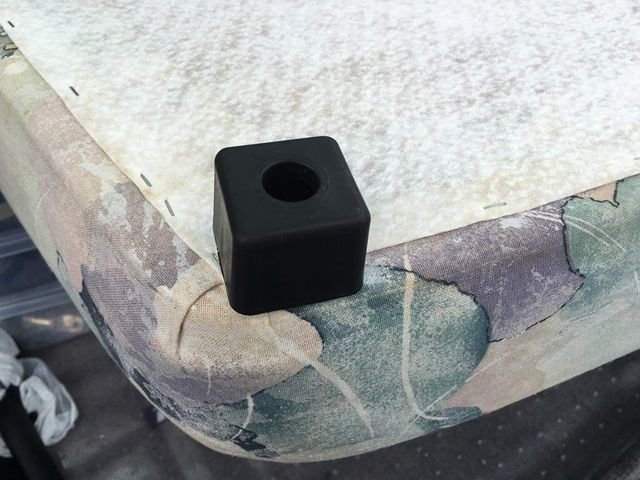
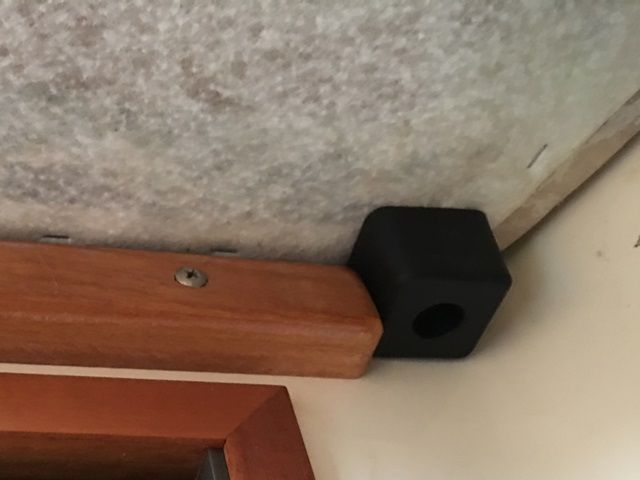
For those who are curious, the additional wood frame under the furring strip in the second picture is a return duct for the reverse cycle system, which is mounted under the V-berth.


For those who are curious, the additional wood frame under the furring strip in the second picture is a return duct for the reverse cycle system, which is mounted under the V-berth.
